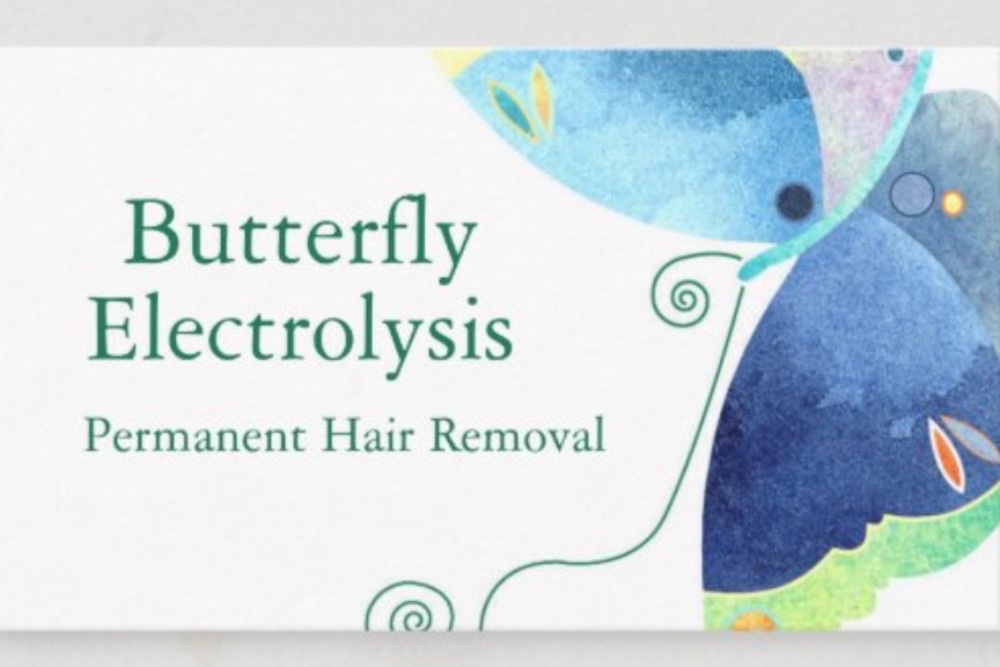Hair Removal Information

Why Choose Electrolysis?
Electrolysis is a popular choice for hair removal for several compelling reasons:
- Permanent Hair Removal: Electrolysis is the only FDA-approved method for permanent hair removal. It effectively destroys hair follicles, preventing future hair growth.
- All Skin and Hair Types: Unlike some laser treatments, electrolysis is suitable for all skin tones and hair colors, making it versatile for diverse clients.
- Precision: Electrolysis targets individual hair follicles, allowing for precise treatment, especially in small or sensitive areas like the face.
- Long-Lasting Results: Once a hair follicle is destroyed, it won’t grow back, leading to long-term satisfaction for clients.
- Reduced Ingrown Hairs: Electrolysis helps minimize the risk of ingrown hairs, a common issue with other hair removal methods like shaving or waxing.
- Safe and Regulated: When performed by a certified professional, electrolysis is a safe procedure with minimal side effects.
- No Downtime: Most people can return to their regular activities immediately after treatment, making it convenient.
- Customizable Treatments: Electrologists can tailor treatments to individual needs, taking into account hair type, skin sensitivity, and treatment areas.
Is Electrolysis safe for everyone?
There are several conditions and medications that are either contraindicated fully or require a doctors approval before receiving treatment:
- Counterindicated for any treatment
- Heart Condition
- Hemophilia
- Pacemaker
- Seizures
- Transplants
- Pregnant or trying to become pregnant
Restricted treatment
Active Lesions/open cuts: These areas cannot be treated until fully healed
Accutane: Only if you are off of medication for 1 year to avoid any scarring.
Retin A/Renova: Stop applying 2 days before your session and do not restart until 2 days after your session if you are having treatment in that area.
Moles: Can be treated with a doctors release form
The following conditions require a Doctors Release to treat
- Carcinoma
- Coagulation Problems
- Diabetes
- Fainting Hepatitis
- Keloids

How does electrolysis work?
Electrolysis is a method used to permanently remove unwanted hair that has been in use since 1875. It involves the use of electrical current to destroy hair follicles. During treatment, your electrologist inserts a small probe into an individual hair follicle and uses one of several methods to destroy the growth mechanisms:
In my practice I currently only uses the galvanic modality as I find it most comfortable, kindest to the skin, and long term results are comparable to those of other modalities despite longer insertion times.

Galvanic Electrolysis:
- Process: Direct current is used to produce a chemical reaction that generates lye (sodium hydroxide) in the hair follicle, destroying it.
- Application: Suitable for all hair types and skin tones. It takes longer than other methods since each hair is treated individually.
Thermolysis
(High-Frequency Electrolysis):
- Process: Alternating current is applied, generating heat in the hair follicle to destroy it.
- Application: Faster than galvanic electrolysis and effective for fine or thin hair. Treatment times are shorter, but it may not be as effective for coarse hair.


Blend Method:
- Process: Combines both galvanic and thermolysis methods, using direct and alternating currents simultaneously.
- Application: Provides the benefits of both methods, making it effective for various hair types and allowing for quicker treatment times while ensuring thorough follicle destruction.

What do I need to do before an appointment?
- You will need to permanently stop any hair removal method that pulls the hair out from the root. Pulling the hair out will make treatment less successful and increase the amount of time before you are done. Shaving, depilatory creams, and trimming the hair is allowed.
- Stop hair removal methods approximately three days in advance. Hair should be easy to grab with tweezers, roughly an eighth of an inch long
- HYDRATE! Electrolysis works on the moisture in your follicles, so it’s important to be hydrated. Consider having an electrolyte beverage an hour before your appointment to increase available fluids in your skin
- Clean Skin. It is best to come in with skin makeup/lotion free for treatment
Remember – discomfort is increased if you are very tired or stressed, so do your best to come in rested and relaxed!
What do I need to do after an appointment?
After undergoing electrolysis hair removal, proper aftercare is essential to ensure the best results and minimize any side effects. Here are some key aftercare tips:
- Avoid Touching the Area: Refrain from touching or picking at the treated area to prevent irritation and infection.
- Keep It Clean: Gently cleanse the area with mild soap and water. Avoid using harsh chemicals or scrubs for at least 24 hours.
- Moisturize: Apply a soothing moisturizer or aloe vera gel to keep the skin hydrated and help reduce redness or swelling.
- Avoid Sun Exposure: Keep the treated area out of direct sunlight for at least 48 hours. If sun exposure is unavoidable, use a broad-spectrum sunscreen with at least SPF 30.
- Skip Hot Baths and Saunas: Avoid hot baths, saunas, or steam rooms for 24-48 hours post-treatment, as heat can irritate the skin.
- No Makeup or Products: Avoid applying makeup, lotions, or any skincare products on the treated area for at least 24 hours to minimize irritation.
- Avoid Intense Exercise: Refrain from vigorous workouts for 24 hours, as sweat can irritate the skin.
- Follow-Up Treatments: Schedule follow-up appointments as recommended by your electrologist to achieve the best results.
- Watch for Reactions: Monitor the treated area for any unusual redness, swelling, or signs of infection. Contact your electrologist if you have concerns.

